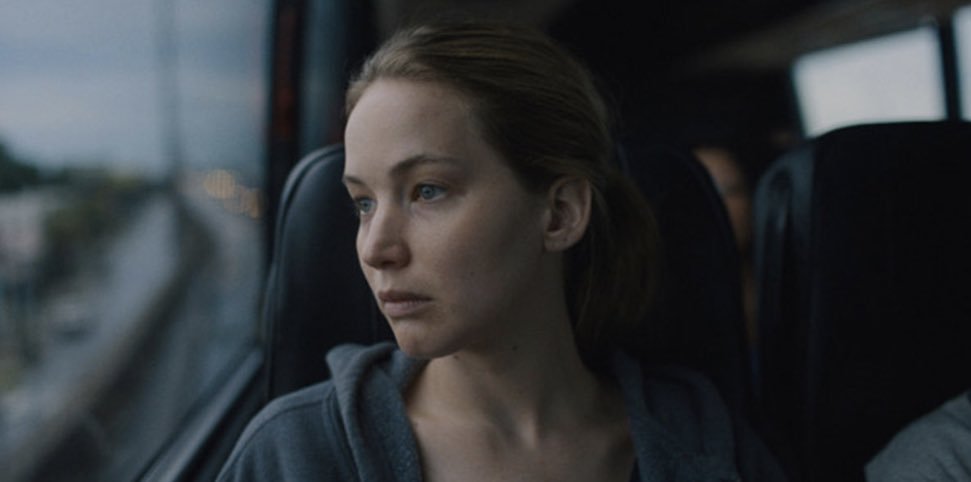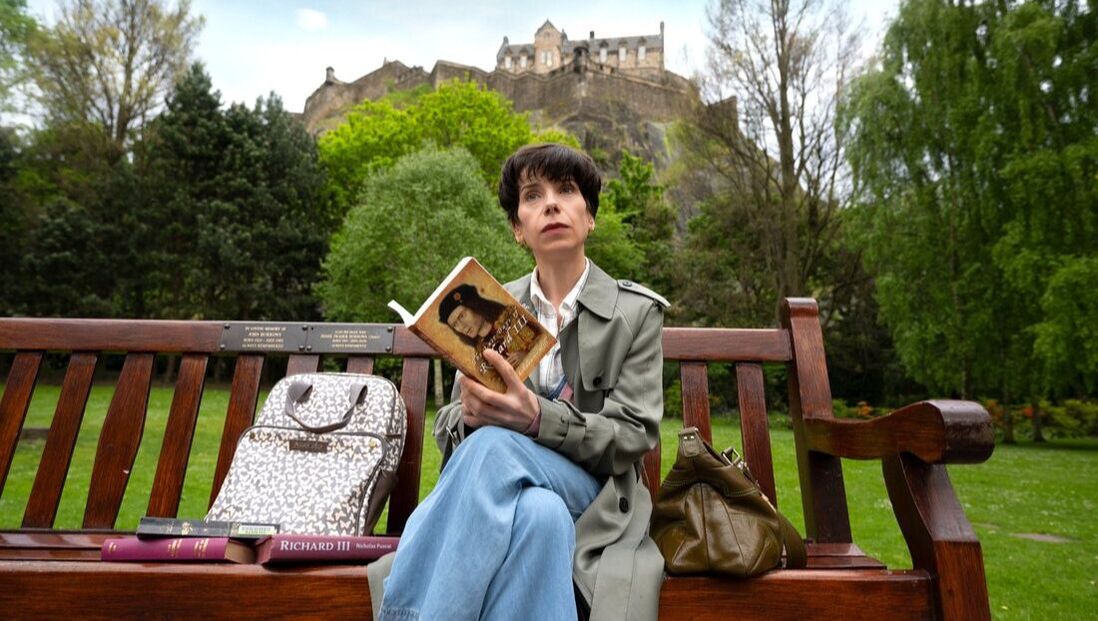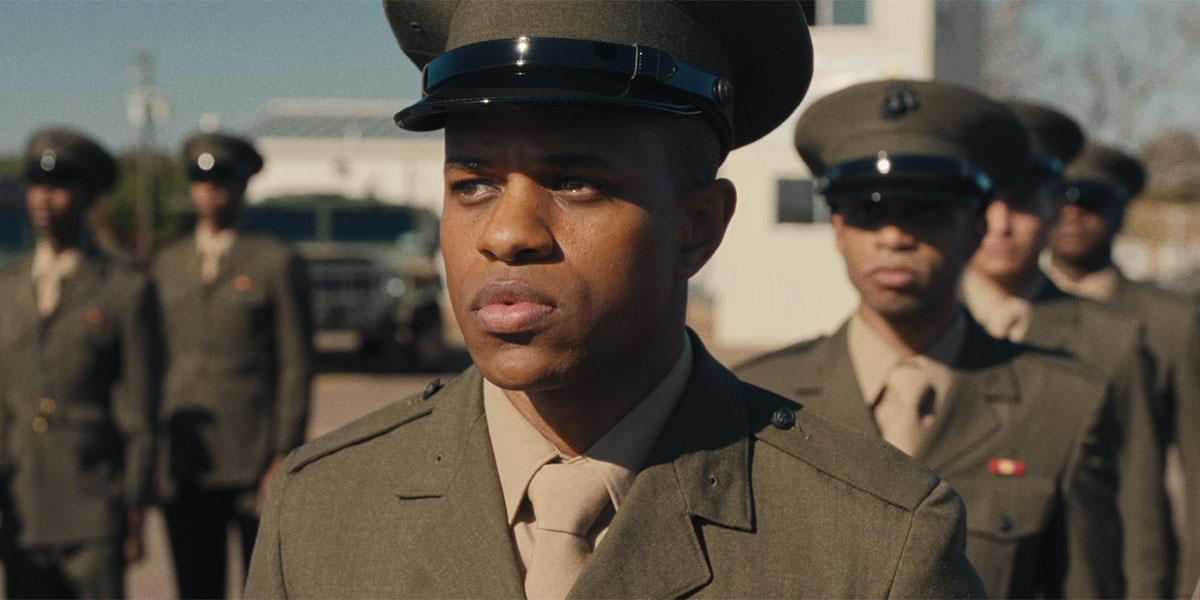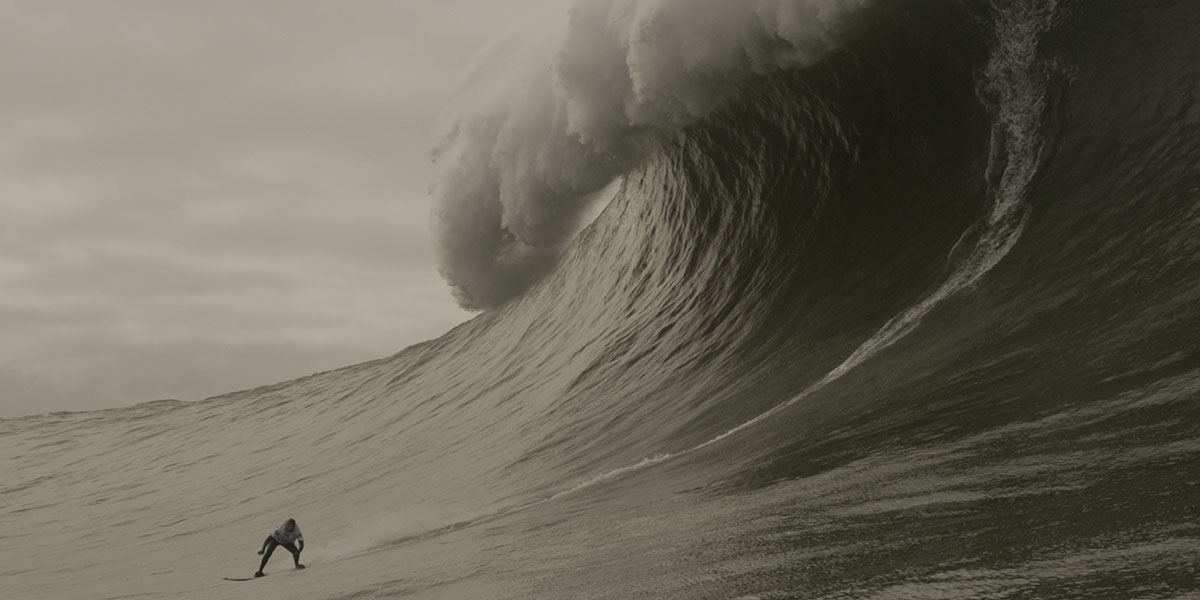|
A still from "Wendell & Wild" From the brilliant visionary behind “Coraline,” “The Nightmare Before Christmas,” and “James and the Giant Peach” comes another dark stop-motion animation picture. Director Henry Selick is back in his element with “Wendell & Wild,” an entertaining coming-of-age fantasy that comes thirteen years after his previous film. Is it worth the wait? While not as terrifying as the button-eyed nightmare fuel in “Coraline,” the director once again proves his artistry in an awe-inspiring sub-genre of animation. His signature spooky style is crawling all over “Wendell & Wild,” which introduces an exciting collaboration between Selick and co-writer Jordan Peele for a tale of inner demons. Peele’s insightful humor and remarkable experience in the horror genre shine with something to say. There is plenty to admire in the sprawling ambition of the story, and the stunning handmade animation that brings creative ideas to life. Clever punk elements add layers to a recurring core theme of rebellion. The world-building is vivid, and the characters are fun, but the story is over-packed with subplots. “Wendell & Wild” stands out as a horror-comedy that fulfills its animated promise, only leaving you wanting more focus on the story.
The story follows protagonist Kat Elliott (Lyric Ross), a teenager holding onto survivor’s guilt from the death of her parents when she was a little girl. Ever since her parent's death, their hometown of Rust Bank deteriorated into a ghost town. Once full of thriving people and businesses, the town is now plastered with posters of a corporation that wants to build a private prison on the land. The villains of the film are quickly identifiable, and their plot looms over Rust Bank like a stormy cloud. Meanwhile, Kat attends the town’s Catholic school where she meets a variety of characters: teen classmate Raul (Sam Zelaya), teacher Sister Helley (Angela Bassett), and headmaster Father Bests (James Hong) to name a few. Walking the halls with her father’s boom box blaring, Kat is not in the mood to make friends. But all that changes when she unearths supernatural powers and meets her demons, who have names. Kat’s inner demons take on the form of scheming brothers Wendell (Keegan-Michael Key) and Wild (Jordan Peele), who reside under the nose of their father Buffalo Belzer (Ving Rhames). When the demons discover that Kat has a portal to the Land of the Living, they propose she summon them above ground and she agrees on one condition: they must bring her parents back to life. What follows is a rebellious adventure in a world where demons are not the scariest part. The story is embedded with punk-rock energy that also lives in the characters, who challenge positions of authority and learn more about their surroundings in the process. Kat’s character speaks to the significance of approaching one’s inner demons face-to-face and being lifted by the company of a supportive community. When the film is focused on the protagonist and her relationship with the demons, the story flourishes. Kat navigating a new setting while facing obstacles from inside and out is a strong core. But the screenplay has a lot of moving parts, not all of which are fleshed out. “Wendell & Wild” is pulled in multiple directions, often at odds with where to go. Commentary on the prison-industrial complex is one example of how the film establishes a narrative in real-life horrors. The villains reek of dollar sign eyes and heartlessness. As they scheme their way to take over Rust Bank, using various characters as pawns, their actions spawn subplots that are too loosely connected. Not enough time is spent fleshing out all these new threads and the characters born from them. As a consequence, the film feels rushed in terms of character development and story revelations. This can be felt strongest in the final act, where several subplots are given conclusions too quick to even digest. While the story is swimming in an overflow of ideas, there are plenty of positive elements to the film that make it stand out. The characters are interesting to watch and feature fantastic voice work. There is strong representation to be found in the film, most memorably with trans character Raul, who holds space as Kat’s sidekick while also having his own backstory. The screenplay incorporates different aspects of his life and personality as well. The film also lives up to the expectation of Selick’s return to stop-motion animation. The world-building is wondrous. Spooky, gooey, nightmarish production design brings the land of the living, the dead, and the in-between to life with a punk edge. The detailed animation is a marvel – from the fuzz of a hair strand to the lifelike material of a doll. As well, the look and sound of a pop-up booklet unfolding – when Wendell and Wild show their theme park presentation – is a great example of sound design adding weight to the visuals. A lot goes on in “Wendell & Wild,” and while not all of it comes together coherently, the level of ambition and creativity is admirable. The film has heart and touches on strong themes from facing your inner demons, to the grip horrors of the past have on the present. The punk elements are a hit, including a wonderful soundtrack that gives a boost of energy to scenes. The soundtrack features hints of choral music that will remind you of “Coraline,” and is used effectively here as well. Enough of “Wendell & Wild” works to overpower the weaknesses in pacing and story-building. The film does well at starting with a strange idea, then adding elements to ground the story from there. If only there were a neater grip on bringing all the subplots together into a more coherent experience.
0 Comments
Jennifer Lawrence in "Causeway" (2022) When it comes to breakout performances, a conversation without Jennifer Lawrence in Debra Granik’s independent drama “Winter’s Bone” would be incomplete. At age twenty, Lawrence was a prodigy. Her Oscar-nominated performance as Ree, a teenager in rural Missouri trying to hold her family and home together, showcased an exciting new talent. She gave the feeling of someone who possessed so much more knowledge and experience than her years. Ironically, following her breakout role as Ree, Lawrence was often cast in roles that accelerated her on-screen age – from “Silver Linings Playbook” and “American Hustle” to “Joy.” Her career took off with studio-driven roles that subverted a coming-of-age thread and held a magnifying glass further from the indie world. So much so that when a film like Lila Neugebauer’s feature directorial debut “Causeway” comes along, it’s a refreshing change of pace for one of the biggest movie stars on the planet. But this film is well beyond a ‘welcome back’ star vehicle. It’s a meditative unpacking of people who gravitate towards each other through the innate need to be understood.
“Causeway” tells the story of a soldier struggling with PTSD who re-enters a life she thought she left behind for good. After an explosion in Afghanistan, Lynsey (Lawrence) sustains a traumatic brain injury and is sent back to the U.S. The film opens with a pin-drop moment of quiet as a caretaker (Jayne Houdyshell) helps her regain mental and physical strength. This intimate introduction sets the stage for a measured character-driven story of recovery. Lynsey returns to New Orleans and moves in with her mother (Linda Emond), which does not provide the peace of mind nor the independence desired. Being back in a home of open wounds puts Lynsey face-to-face with her own childhood, along with the uneasy feeling that she no longer serves the purpose she found as a soldier. For Lynsey, being home is temporary. Her main priority is convincing her concerned neurologist (Stephen McKinley Henderson) to sign medical papers that would allow her to redeploy. In the meantime, when she’s not cleaning pools, she’s wandering around a familiar neighborhood unsure of how to fit back in. The camera lingers idly behind, but when a chance meeting opens up a new path, “Causeway” jolts from slumber. Lynsey meets James (Brian Tyree Henry), a mechanic who fixes her broken-down truck and offers her a ride home one day. Both on a different path of personal healing, they carry their emotions close and keep a measured tab on what pieces of backstory they share. James has a personal tragedy underneath the surface that the film draws out with patience, matching the character’s hesitance to share right away. As Lynsey and James spend more time together, they ultimately begin to rely on each other like a second nature. Their gravitational journeys build the foundation for a conversation-driven drama, which can be refreshingly low-key one moment, and too subdued for its own good the next. Neugebauer’s direction feels lost in thought at times, as if navigating a story through a daydream. For every moment of reflective silence, there is one of impassivity. The inconsistency puts up a challenge to feel the characters’ connection beyond what is explained on the surface through revealing backstories. The jolts of energy come from two thoughtful, stirring performances that say more with a look than words on a page. Lawrence plays Lynsey with exceptional restraint and a lived-in quality that makes her performance all the more honest. You can feel this character’s sense of isolation and tenacity as she tries to navigate life after a debilitating injury. Lawrence also has stunning moments of stillness, especially in the first half of the film when she exudes micro-expressions with quiet intensity, like a rollercoaster perpetually ticking upwards. Wonderful as Lawrence is, even more resonating is Brian Tyree Henry as James. To name a few stellar performances, from “Atlanta” and “Widows” to “If Beale Street Could Talk” and “Eternals,” Henry is a star with remarkable range. In “Causeway,” he personifies the exercise of concealing grief. James is a complex character on a journey of healing, which takes on physical and emotional tolls from being reserved about his emotions. In a nighttime pool scene – one of the most resonating moments of the film – he lets his guard down and that vulnerability is shattering to watch. While “Causeway” is being touted as a ‘welcome back’ for Lawrence, the film often plays in the realm of a steady two-hander and would not fully work without Henry’s incredible performance. So much of the story is about a blossoming endearing friendship and the effects of two people sharing their stories. The screenplay (written by Luke Goebel, Ottessa Moshfegh, and Elizabeth Sanders) is full of interesting material to unpack. This is a story not necessarily about traumatic experiences but the way people conceal them, and the overwhelming loneliness that comes from doing so. Lynsey and James are two vulnerable people who carry an invincible spirit. It is through their growing bond that one starts to see the cracks, until they decide to let their emotions fall to the wayside. Lawrence and Henry play the roles with ease, especially Henry whose work is so richly detailed, he brings to life the most memorable character in the film. “Causeway” moves to the slow melody of a slice-of-life character drama, where you are not sure where everyone will end up, but they’ve experienced an awakening of some kind. Neugebauer can get a little too lost in thought, but her pensive point of view makes for some truly reflective storytelling that lets the chips fall where they may. Sally Hawkins in "The Lost King" From the team behind the Oscar-nominated “Philomena” comes another breezy adaptation of a true story. Directed by Stephen Frears, with a screenplay by Jeff Pope and actor-writer Steve Coogan, “The Lost King” is based on amateur historian Philippa Langley’s discovery of King Richard III’s long-lost remains in a Leicester car park in 2012. The film aims to give credit where its due by focusing on Langley (played by an effortlessly charming Sally Hawkins), whose historic finding appears sidelined by academics. She challenges Leicester University and all others in her way to restore the King’s defamed reputation. The story glides by and is engaging enough to follow along, but doesn’t amount to much beyond the sum of its parts. Frears explores historical material from an often lightweight perspective; whether it’s the aforementioned “Philomena” or the opera biopic “Florence Foster Jenkins” for example, he maintains a paint-by-numbers approach that can overlook complexities of character. He has a remarkable track record of working with a plethora of wonderful dames and legends – Judi Dench, Meryl Streep, Helen Mirren, Michelle Pfeiffer. The list continues with Hawkins, who paints beyond numbers and carries “The Lost King” on her shoulders to a degree just as successful. Though much like the actors listed, she is guided by pedestrian storytelling. The biggest weakness lies in the screenplay, which relies heavily on a limited thread of a story and stretches a piece of fiction too thin.
“The Lost King” starts with the promise of something jubilant. Alexandre Desplat’s twisty score during the opening credits has you strapped in for a diverting drama. The music evokes the feeling that something big is about to happen, a great parallel to where the story begins. On the cusp of a centuries-old discovery, Philippa Langley is about to go on a journey towards commissioning a historical investigation on King Richard III. Langley’s interest in the King begins early on in the film, with a local Shakespeare production of Richard III. She notices how the play leans into misconceptions about him as a murderer and usurper. Most of all, she feels a connection to the way his disability is misconstrued, and the way her own experience with chronic fatigue is dismissed. This sparks a curiosity in her that doesn’t go away. After the local production, she starts seeing visions of Richard III (played by a poker-faced Harry Lloyd). She considers his haunting presence a reaffirming sign – that his story should be retold, and that she should be the one to pursue it. With a break from her job and the push of a local ‘Richard III enthusiasts’ group, Philippa is on her way to make history. The film is at its core about a woman finding her voice and using it. Watching Hawkins go against the rulebook and stand her ground throughout is certainly satisfying. She gives her character’s journey heart and entertainment. While admirable to center Langley in this narrative, are the trio of Frears, Coogan, and Pope the ones to successfully tell a dramatized version of her experience? Not really. Their collaborative efforts search for moments to tug at your heartstrings but fall short with an approach too lightweight for its own good. Given the focus on Hawkins’ character in moving the story along, the screenplay avoids a more in-depth exploration of her. Hawkins does her best to ground heightened realism and play Langley’s campaign with conviction. Her efforts are let down by a film that glosses over rich details and glides on frivolity to tell the story. The twee elements of “The Lost King” can be endearing, but the film doesn’t strike the balance of being the feel-good true story it wants to be. Given recent news of potential legal action against the filmmakers for their portrayal of Leicester University as villainous, “The Lost King” is based on a true story to an extent. The artistic liberties taken unfortunately don’t have much effect on elevating the film beyond an exercise of simply shedding light around Philippa Langley’s curiosities that led to her discovery. With the direction and screenplay on borderline autopilot, probing conversational scenes between characters fall flat. Even Steve Coogan, who appears in the film playing Langley’s disinterested husband, lacks energy and presence. Hawkins makes up for this in spades, though without the strengths of insightful and memorable storytelling to support her performance. Without very much to say beyond what a Wikipedia page can lay out, “The Lost King” falls short in its own discovery as a standalone piece of work. What the film aims to illuminate through figments of imagination and a feel-good campaign story, is surmounted by reading about Philippa Langley’s real-life journey. The commitment of Hawkins to her craft, along with the joyousness of Desplat’s original score, are delightful hints of life. But the film falls short of the energy they bring to elevate the story. Frears’ oddly disorientated direction, along with an uneven screenplay and editing, contribute to an inconsistent tone. Floating somewhere between historical drama and whimsical fantasy, “The Lost King” is a sporadically charming and forgettable afterthought. Jeremy Pope in "The Inspection" (2022) In 2019 came writer-director Elegance Bratton’s documentary “Pier Kids.” The film takes an immersive look at three LGBTQ homeless youths in New York City who congregate on Christopher St., a safe haven for homeless queer and trans youth. The subject matter echoes Bratton’s own experience as a gay Black man who, having come out to his mother years ago, was kicked out of the house. A case of art emulating life, Bratton brings an autobiographical story to the screen in his narrative feature debut “The Inspection.” Told with confidence and heart, “The Inspection” invites conversations around sexuality, masculinity, and community building in the military world. The story follows young Ellis French (Jeremy Pope), who joins the Marines during the “Don’t ask, don’t tell" era, in which U.S. policy instituted by the Clinton administration prevented gay people from serving openly in the military. Operating in a system designed to discriminate and isolate, Bratton's feature tells a stirring portrait of individuality and identity.
Ellis French (Pope) is navigating through an isolating world. After being thrown out of the house by his mother Inez (Gabrielle Union), he has a limited view of which paths to take that will be societally accepted. Experiencing homelessness, broken family dynamics, and wanting to belong somewhere, Ellis decides to join the Marine Corps. The role of a soldier is defined so clearly. Rules and regulations are set. Value is determined by the ability to protect others, and that becomes part of the narrative for Ellis’ character. He is searching for validity under the false pretense of camaraderie and “belonging” in an overwhelmingly homophobic environment. He meets characters who reveal themselves to be either an ally or not while having to navigate the uncertainty of intentions. As the film progresses, the combination of Bratton’s sensitive direction and Pope’s illuminating performance tells a powerful story of self-reclamation. “The Inspection” is initially dressed as an ill-fated story for its protagonist. The story tends to follow a formulaic route, particularly when it comes to the Marines setting. The military genre has seen many stories born from similar environments and circumstances. While not much surprise is to be found in how “The Inspection” plays out, from grueling training montages to intense drill sergeant orders, Bratton finds ways to introduce unexpected elements along the way. Whether it’s the humor instilled in some of the dialogue or the magic realism that establishes a fantasy shower scene. Bratton takes an intriguing approach in bringing more of a personality to an incredibly rigid setting. With a sense of conviction, he is searching for something to say in a familiar genre, while also maintaining a personal perspective of queer identity. While the film is based on a composite of Bratton’s own experiences, Jeremy Pope finds a way to personalize Ellis beyond the character’s circumstances. Instead of simply being a vessel for a person’s life story, the actor digs deep into his character's interior life. What are his motivations and dreams? How do the dynamics with his mother shape the person he is becoming? Bratton’s retelling of personal experiences shines through Pope, whose performance completely drives the story with astonishing sensitivity and urgency. Pope shares powerful scenes with his on-screen mother Gabrielle Union, who embodies a personification of conditional love. Ellis’ mother carries darkness inside; she sees her child as disposable, only worthy of “redemption” if he can return home from the military as anything but himself. Union delivers resonating work and, while she doesn’t have as many scenes as expected, the writing of her character lends itself to the core of the film, which Bratton returns to for his protagonist’s reclamation of identity. From peace and love to authenticity and community, Bratton leans into shining a light on what kids such as Ellis deserved from the beginning. But the film has a disconnect between the exploration of the protagonist’s individuality, and the harmful systems that stay in the shadows of the storytelling. While there is a sensitive approach in telling this personal story about Ellis, there is an underexplored subject of the military-industrial complex and taking advantage of so many young men with nowhere else to go but the Marines. Much of the film unfolds in a contained military setting with supporting characters who feel like tropes, leaning into behavioral expectations put in place to move the story from one point to another. For instance, Bokeem Woodbine plays commanding drill sergeant Laws so well, but the writing scratches the surface of this character. Laws reinforces turning men into killing machines who only serve that purpose. There are intriguing throwaway details to Laws’ own experience that the film quickly moves on from. A lot of the subject matter is presented at face value and goes under-utilized in the bigger picture. Given how much of the story pulls from different people’s perspectives surrounding the protagonist, it’s more of a detriment to the film trying to get to know underwritten characters. But outweighing the disappointment are far more effective elements that work to the film’s benefit. In addition to Pope’s wonderful performance and Bratton’s heartfelt personal storytelling, the technical achievements help create an immersive experience. The music by Animal Collective certainly has its affecting moments; there is a fear to their sound that elevates urgency and intensifies drama on screen. The camera work is tense throughout, and at times powerfully intimate when exploring vulnerable moments that the protagonist is experiencing. Even though you get the sense that by the film’s conclusion, Bratton is still searching for what to say, he often returns to a resonating balance of difficult family dynamics and one man’s experience of finding power in what he loves about himself. “The Inspection” is an intense portrait of survival in truthfulness, a narrative feature debut that inspires hope in the face of adversity. A still from "Maya and the Wave" (2022) One of the greatest big wave surfer champions of all time is getting her dues in director Stephanie Johnes’ “Maya and the Wave,” an uplifting documentary about Brazilian surfer Maya Gabeira and her extraordinary dream come true. The doc follows Maya’s resilience and courage tackling gigantic waves in a sexist, male-dominated sport. Her journey stands out among an ocean of sports documentaries, not only because she is an interesting subject, but the director allows her vulnerability to be seen. Whether pessimistic about the future of her career, or feeling low just days after the rush of a successful wave ride, Maya is driven by fear of the ocean. One would not expect fear from how Johnes introduces her. Maya is first presented as the picture of invincibility. Snapshots of her reputation in the media show a young woman of many accolades. She has won awards, graced the cover of magazines, accepted honors for her achievements in surfing. As “Maya and the Wave” progresses, so too does the realistic deconstruction of her image into one that is flawed and human. Johnes’ intimate direction puts you in Maya’s corner at times when few people were there. Knowing how much Maya Gabeira has overcome, watching “Maya and the Wave” reach its gratifying conclusion is one of the most celebratory moments captured in film this year.
The documentary explores Maya’s adrenaline rush towards success, and the road blocks along the way that brought on some of the lowest points of her career. Ever since she was a child, she chased adrenaline, keen to experience activities that tested her physical stamina. But when it comes to professional surfing, this is more than just a rush. When Maya held her first surfboard, she felt like she belonged somewhere. This was her dream, a deep part of her identity she had to fulfill. So, through rigorous discipline and training, she overcame her fears to catch some of the biggest waves anyone has ever caught. Maya’s abilities speak for itself, but in a male-dominated sport are practically made invisible. Johnes does not shy away from the chauvinism embedded in the industry, and its effect on Maya’s mentality. When Maya arrives to a hotspot in Portugal called Nazaré, a monumental destination for surfers, male talking heads appear on screen to interject in dismissal of her presence. To paraphrase, they question why she is here, and that she’s not that great of a surfer. Maya is constantly held to the bars men have set in the surfing world. Particularly from the perspective of women in this sport, one mistake is weaponized as an excuse to dismiss them, “proof” of their “limited abilities”. The documentary brings resonating focus to the double standards of who can afford to make mistakes in an industry where women are judged far more harshly. After Maya has a near-death experience surfing waves in Nazaré, she is suddenly viewed differently from the snapshot introduced at the beginning of the documentary. Men call her authenticity into question, as if she has no business surfing professionally anymore, and one sees first-hand how this affects Maya. The strength of Johnes’ direction rests in focusing on the subject’s point of view – through Maya’s own words and expressions, one grasps how influential outside factors are on her physical and intellectual energy. The more you learn about Maya, the more specificity is given to who she is, beyond what others expect of her. The title of the documentary is essentially what you get from “Maya and the Wave.” The focus is on Maya’s relationship to the water, rocky and calm in equal measure. Gorgeous photography of rising waves crashing to shore are hypnotic to watch. The visuals of the waves elicit different emotions, dependent on which point of Maya’s career is being explored on screen. For every moment of the waves evoking excitement and victory, there are moments that feel terrifying. The “wave” in the doc title represents more than just water. To paraphrase Maya’s father, Brazilian politician Fernando Gabeira (who appears frequently in the doc as part of her loving support system), if Maya’s journey were just about the waves it would be easy. The amount of physical and mental stamina required, not to mention the self-awareness of one’s abilities, speaks to professional surfing as one long continuous process for Maya. More than just a temporary rush, it is the manifestation of a young woman’s dreams. When Maya’s accident Nazaré unfolds, through archival footage and panicked narration, a split second elicits fear of her dreams crashing down. But the sense of dread surrounding her future in professional surfing starts to melt away with Maya’s growing perseverance. Maya was inspired greatly by her father – seeing his appearance in the Oscar-nominated Bruno Barreto thriller “Four Days in September” (1997) sparked her admiration of his courage. Courageous is a word used often to describe Maya in various moments of highs and lows as she overcame trauma. Following the Nazaré accident, she underwent multiple back surgeries and had a years-long road to recovery. The direction weaves together some gripping perspectives about this moment in Maya’s life. Throughout the documentary are visual references to the Red Bull logo, as Maya had a lengthy partnership with the brand. The logos are questionably noticeable at first. Only when Johnes digs deeper does one discover how much energy Maya put into creating experiences for Red Bull, only to feel used and drained by the company years later. Deemed “less engaging” during her time spent recovering from surgeries, the brand cut their support for Maya, citing she wasn’t giving as much energy to the brand anymore. Maya’s road to recovery was not just physical; her endurance of mental obstacles in moments where she felt alone are moving to watch. Given the challenges Maya faced as a woman in a male-dominated industry, the most noticeable weakness in Johnes’ documentary is the overuse of men’s perspectives. There are plenty of male talking heads whose commentary takes too much control particularly in the first hour. Their constant input of doubting Maya’s abilities becomes redundant when this message is communicated through the subject’s own words and experiences. There is a missed opportunity in hearing more women’s perspectives from the surfing world as well. In keeping with telling a contained story about Maya, Johnes stays with her exclusively, giving voice to a young woman whose accomplishments had been disregarded for years until a wave of public support helped her towards more recognition. After multiple surgeries and a return to training, Maya reached the highest point of her career: surfing a 22.4 m high wave, and doing this in the same place she had her accident. It’s the biggest wave ever surfed by a woman, and it was ignored by the Guinness World Records until Maya herself started an online petition to get a response. The documentary explores many dichotomies such as this – she could have the world’s biggest accomplishment and still be met with silence. She could experience some of the worst pain of her life and push through with newfound adrenaline. The relationship between physical and intellectual strength, between her achievements and embedded sexism undermining it, are driving forces of the story Johnes presents through her subject. “Maya and the Wave” adheres to the message of where the mind goes, the body will follow. In focusing on Maya’s vulnerability and inner endurance, what follows is an uplifting image of Maya and her reverberating impact on a younger generation of girls, who now believe in the dream of being a professional surfer. |
Archives
April 2024
Categories |






 RSS Feed
RSS Feed